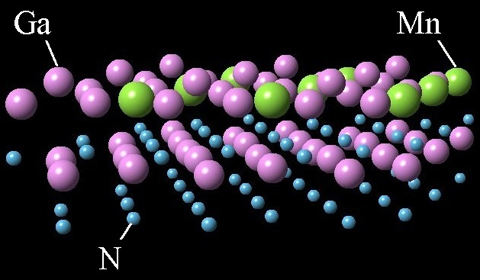 Ohio University research merges manganese, gallium nitride in uniform layer
Ohio University research merges manganese, gallium nitride in uniform layer
Ten years ago, scientists were convinced that a combination of manganese and gallium nitride could be a key material to create spintronics, the next generation of electronic devices that operate on properties found at the nanoscale. But researchers grew discouraged when experiments indicated that the two materials were as harmonious as oil and water.
A new study led by Ohio University physicists in the College of Arts & Sciences suggests that scientists should take another look at this materials duo, which once was heralded for its potential to be the building block for devices that can function at or above room temperature.
“We’ve found a way—at least on the surface of the material—of incorporating a uniform layer,” said Dr. Arthur Smith, Professor of Physics and Astronomy at Ohio University who leads the international collaboration of Argentinian and Spanish researchers.
The scientists made two important changes to create the material merger, they report in the journal Physical Review B. First, they used the nitrogen polarity of gallium nitride, whereas conventional experiments used the gallium polarity to attach to the manganese, Smith explained. Second, they heated the sample.
Read the rest of the RESEARCH story.
Read the journal article: “Manganese 3×3 and √3×√3-R30∘ structures and structural phase transition on w-GaN(0001̅ ) studied by scanning tunneling microscopy and first-principles theory” in Physical Review B.
See this story featured at Phys.org; Nanotechnology News;
Red Orbit; Compound Semiconductor; ECN; Science Daily; Nano Werk;





















Comments